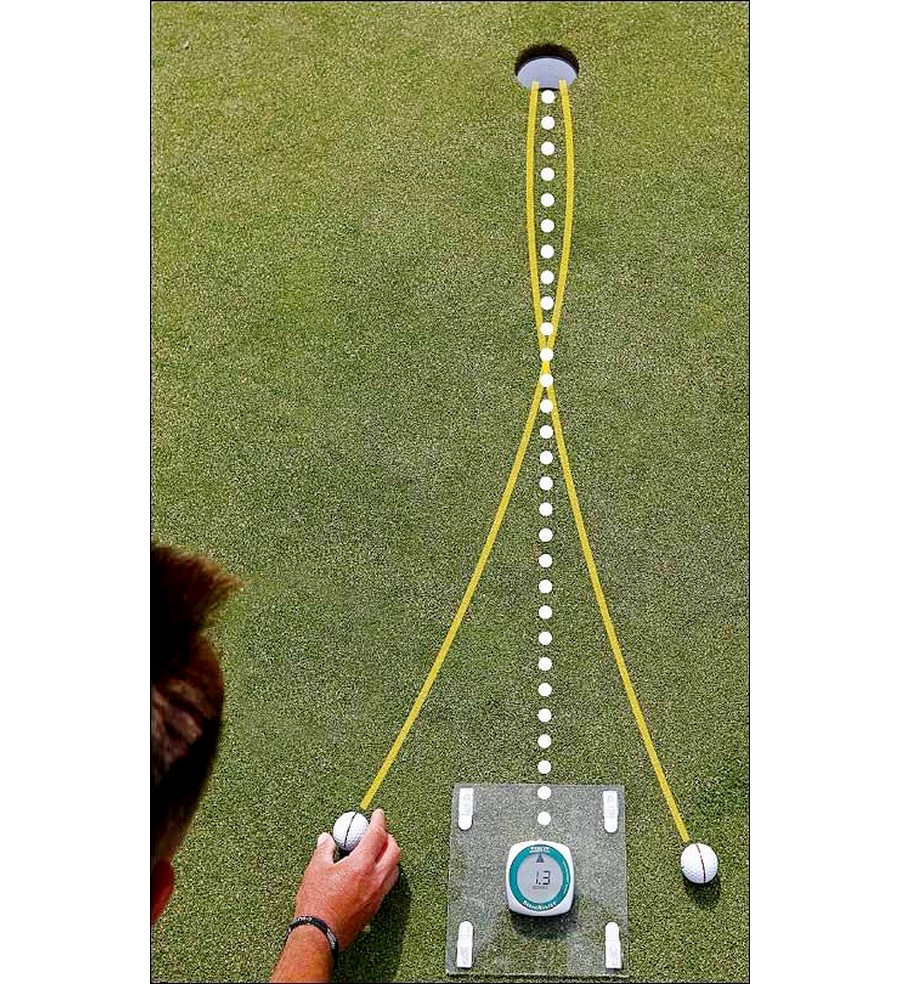On subtle slopes the key to holing those critical four-footers lies in the ability to ‘see’ the deviation from a straight line and read putts accurately. And it’s a skill that can be acquired with experience and practice, says Jeremy Bennett.
So, who will win The Open? Easy answer, the player who reads the greens the best!
The player hugging the claret jug come Sunday evening will almost definitely lead the putting stats, whether that’s putts per green and/or putts per round, or at worst he will be in the top 5. That person may not necessarily have been the best at starting the ball on his intended line (i.e. best stroke) or the very best pace putter, but he will have consistently read the greens better than his fellow competitors.
Muirfield’s green complexes are not especially dramatic or undulating, and as a result of this the breaks are extremely subtle – a frustrating defence! It is the ‘almost straight’ putts that can sow the most doubt in a player’s mind – do they see it as right edge when in fact, it should have been left!
In order to overcome the difficulty of reading those ‘almost straight’ putts you have to learn to identify ‘the straight’. On uniform slopes there are only two possible dead straight putts – one straight down the hill, the other straight up it. When putting from anywhere on the top side, anything right of the straight will break from left-to right, while anything left will have to move from right-to-left. [Without wishing to state the obvious, any putt close to the straight will only have a very faint movement and the most severe breaks will be the 2 putts at 90 degrees to the true straight.]
The knack to finding the straight is for you to move enough to one side of your ball that you are confident the read will break left-to-right, then move to the other side until you can definitely visualise it moving right-to-left: the point directly inbetween the two will be the straight! This is a skill that can be acquired and is there for all to see if you know what to look for. Practising with the help of a digital spirit level is the only true way to learn to identify subtle slopes – it gives you invaluable feedback and confirmation as to where the straight line actually is. A lot of professional coaches use the model you see here – the BreakMasters Digital Green Reader; you can download a similar device onto your smartphone for next to nothing and it will really help you with the necessary information.
If you don’t have a digital spirit level, go out onto the practice green, find the flattest area you can and stroke a few putts until you find the line upon which the ball rolls straight into the cup without deviation – a perfectly straight four-footer. Once you have established that line, place a ball and then look at the surrounds, moving 6 inches, then a foot, and so on either side of the straight putt, and take a good look a the putt in order to learn to recognise the deviation of putts either side of straight. Like all other skills in golf, this is one that requires practice and repetition.
The knack to finding the straight is for you to move enough to one side of your ball that you are confident the read will break left-to-right, then move to the other side until you can definitely visualise it moving right-to-left: the point directly inbetween the two will be the straight! This is a skill that can be acquired and is there for all to see if you know what to look for. Practising with the help of a digital spirit level is the only true way to learn to identify subtle slopes – it gives you invaluable feedback and confirmation as to where the straight line actually is. A lot of professional coaches use the model you see here – the BreakMasters Digital Green Reader; you can download a similar device onto your smartphone for next to nothing and it will really help you with the necessary information.
If you don’t have a digital spirit level, go out onto the practice green, find the flattest area you can and stroke a few putts until you find the line upon which the ball rolls straight into the cup without deviation – a perfectly straight four-footer. Once you have established that line, place a ball and then look at the surrounds, moving 6 inches, then a foot, and so on either side of the straight putt, and take a good look a the putt in order to learn to recognise the deviation of putts either side of straight. Like all other skills in golf, this is one that requires practice and repetition.

The digital spirit level also provides you with the precise percentage of break as well as the direction (left or right of the centre line). And this can help you to establish in your mind useful parameters according to the speed of the surface. For example, a useful fact to remember is that when putting on a green running at 10 on the ‘stimp’ – average summer speed for most UK courses – on a break of 1% or less from 5 foot you will never need to aim outside the edge of the cup. (On quick green, the vast majority of golfers under borrow).
Practising your putting between 5 and 10 foot of the hole is the most beneficial as these are the ‘clutch’ putts to make for every standard of golfer. And with a better understanding of what that subtle break looks like, you will hole more of them!
